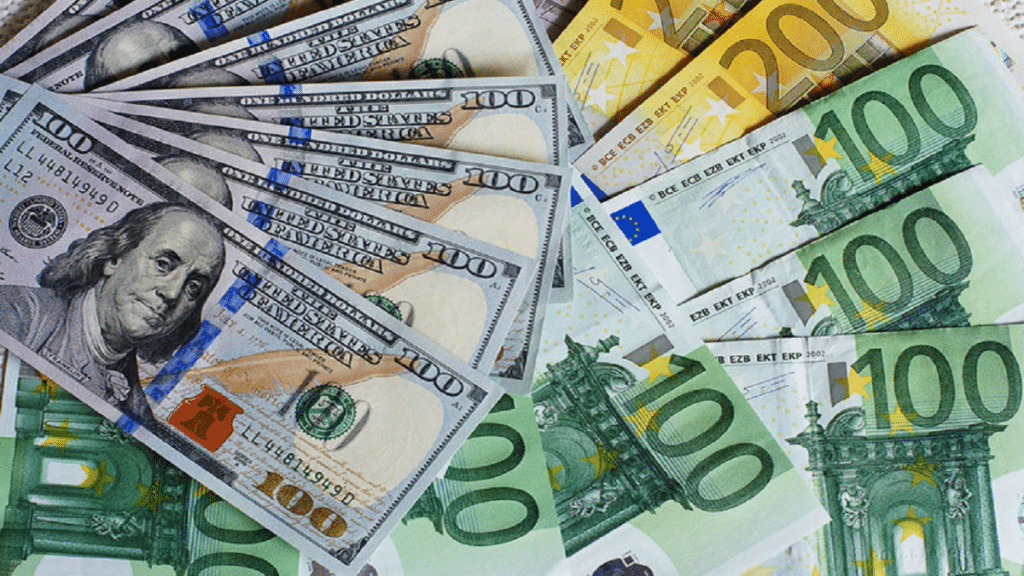The two most well-known currencies in the world are the Euro (EUR) and the United States Dollar (USD). In the forex market, they are one of the most widely watched and traded currency pairs, often referred to as EUR/USD, or the eurodollar. This currency pair represents the exchange rate between the Euro and the US dollar.
In this article, we will be looking at the relationship between the two major currencies and look at what to watch for when trading the EUR/USD.
Inverse Relationship
Like all currency pairs, the EUR/USD currency pair exhibits an inverse relationship, meaning when the value of the euro strengthens relative to the US dollar, the EUR/USD pair rises, and vice versa. For example, if the EUR/USD exchange rate moves from 1.10 to 1.15, it indicates that the euro has appreciated in value against the US dollar.
Economic Factors
Economic indicators and monetary policy decisions from both Europe and the United States heavily influence the EUR/USD exchange rate. Factors such as interest rate differentials, inflation rates, GDP growth, employment figures, and political stability can impact the relative strength of each currency and, consequently, the exchange rate. By keeping an eye on the Economic Calendar traders can anticipate changes in the exchange rate due to economic factors.
Safe Haven Status
Historically, the US dollar has been considered a “Safe Haven” currency, meaning investors tend to flock to it during times of geopolitical uncertainty or market turmoil. In such cases, the EUR/USD pair may experience downward pressure as investors seek refuge in the US dollar, leading to a strengthening of the dollar against the euro.
Correlation with Risk Sentiment
The EUR/USD exchange rate may also exhibit a correlation with broader market sentiment and risk appetite. When global risk sentiment is positive, investors may be more inclined to invest in riskier assets denominated in euros, leading to a strengthening of the euro against the US dollar. Conversely, during periods of risk aversion, the US dollar may strengthen, causing the EUR/USD pair to decline.
Central Bank Policies
Monetary policies adopted by the European Central Bank (ECB) and the Federal Reserve (Fed) play a significant role in shaping the EUR/USD exchange rate. Changes in interest rates, quantitative easing programs, forward guidance, and other policy measures can impact currency flows and influence the relative value of the euro and the US dollar. Typically, when interest rates are higher in the United States than in the Eurozone, you will see the EUR/USD fall, and vice versa.
Best times for trading
Optimal trading opportunities for the EUR/USD arise during the overlap of the London and New York sessions, typically from 13:00 to 17:00 UK time. This period sees the highest volume of forex transactions, leading to pronounced market movements and increased profit potential.
Overall, the relationship between the EUR and USD in the forex market is dynamic and influenced by a multitude of factors. Traders should closely monitor economic indicators, central bank communications, geopolitical developments, and market sentiment to anticipate movements in the EUR/USD exchange rate and make informed trading decisions.
